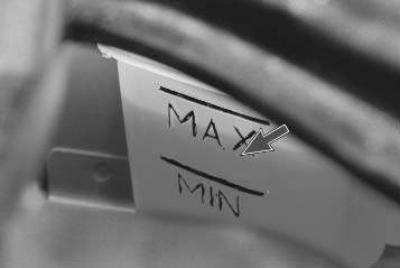To start, just turn on the starter without touching the accelerator pedal. The engine management system will independently set the fuel supply and ignition timing parameters necessary for starting.

1. Open the hood.

2. Use a dipstick to measure the oil level. It should be between the top and bottom marks.

3. Check brake levels..

4.... and coolants.

5. Carefully inspect the engine and engine compartment. Pay attention to drips of gasoline, oil, brake and coolant fluids. Make sure the electrical wiring is intact. Check the fit of the high-voltage wires in the sockets of the ignition coil, on the candles.
6. Without closing the hood (cover it in case of rain or snow), get behind the wheel. Turn on the ignition by turning the key in the switch (castle) ignition to position «II». This will turn on the electric fuel pump. Start the engine by turning the key in the ignition switch to position «III».
Note. It is better to close the hood after the engine starts to work. Before this, it is advisable to once again inspect the engine, make sure that there are no leaks of fuel, oil, coolant, extraneous sounds in its operation.
Note. If, for any reason, during an unsuccessful start attempt, «flooded» spark plugs, use the cylinder purge mode. To do this, press the accelerator pedal all the way and turn on the starter. In this mode, there is no fuel supply and excess gasoline is removed from the cylinders by a stream of fresh air, while the spark plugs are dried. After purging, try starting again in the normal way.
If the engine does not start, there are three main reasons:
- start system does not work;
- the ignition system does not work;
- the power system is not working.
Note. In addition to the main reasons listed, the engine may not start if the canister purge valve malfunctions or if air is sucked through the hose connections of the fuel vapor recovery system.
Visitor comments